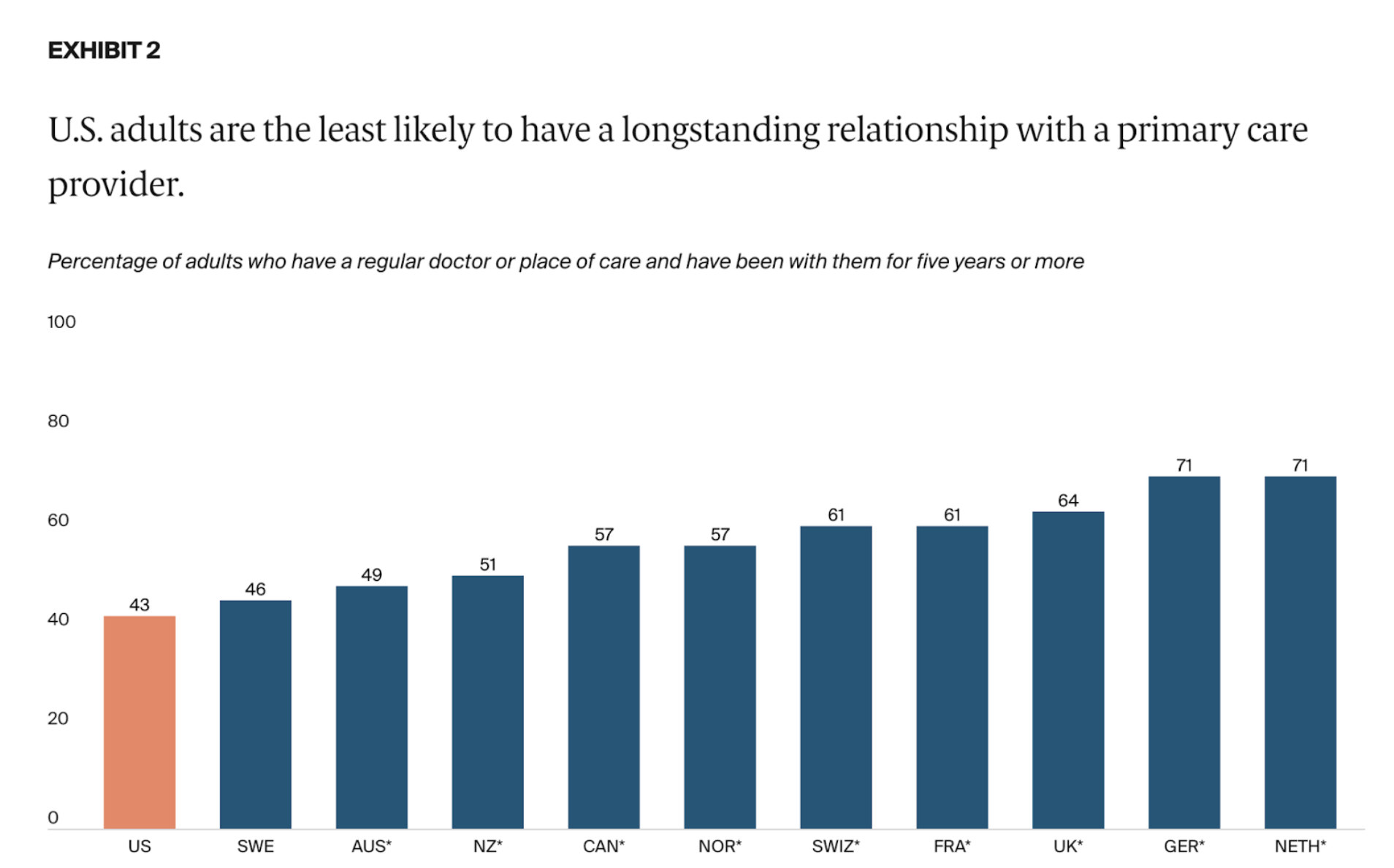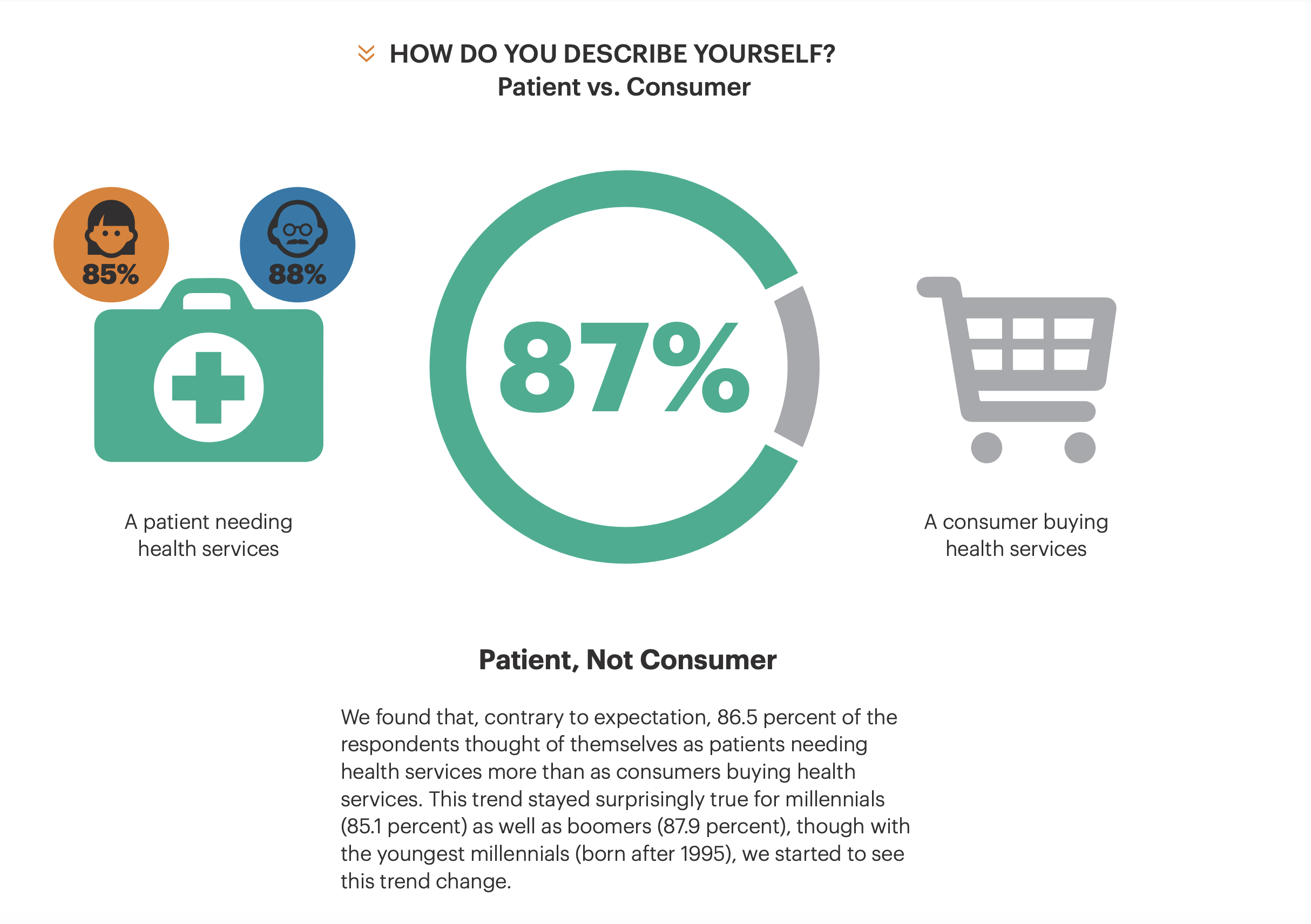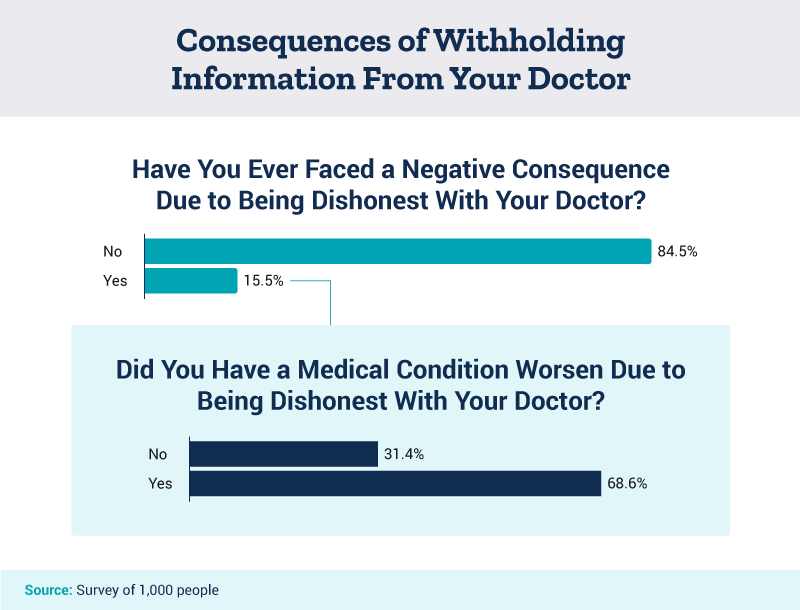︎ Stay In Touch: Improving the doctor-patient relationship through the digital and physical space
Improving trust between the doctor and the patients by informal checkups
and social interaction throughout the year, as well as customising
the exam room experience according to patients’ preferences, ultimately
building a health community
By Katie Bailey︎, Priya Sam︎, Chan Lok Yan︎


Why
The mistrust experienced in the current doctor/patient relationship from lack of acquaintance throughout the year creates an ultimately less productive annual check-up appointment. This lack of trust and comfort in the relationship leads to detrimental health impacts partly stemming from dishonest patient answers to health questions asked by the doctor. Within a full spectrum image of health, these primary care patients also experience loneliness and a common lack of consistency within long term care from not seeing the same doctor over time, both further perpetuating the lack of support in mental health and a fuller picture understanding of the patient’s health that usually stems from a long established relationship overtime. Among 11 high-income countries, only 43% of patients in the US have a long-standing relationship of at least 5 years with their primary care doctor, coming in as the lowest % of the 11 countries. We also know that 87% of respondents to a recent survey expressed that they want to be seen as a patient rather than a consumer of health services - a view that accompanies having a personal relationship with one’s doctor. Therefore, currently the annual check-up appointment is resulting in a more transactional, one-time, exchange rather than a personally patient-centric meeting.

 https://www.commonwealthfund.org/publications/issue-briefs/2022/mar/primary-care-high-income-countries-how-united-states-compares
https://www.commonwealthfund.org/publications/issue-briefs/2022/mar/primary-care-high-income-countries-how-united-states-compares
 https://static1.squarespace.com/static/5595c129e4b02838d1264c98/t/562fa044e4b0c7b6ee98d2cf/1445961796301/Clinic+20XX+Trends+Report_Final_HighRes.pdf
https://static1.squarespace.com/static/5595c129e4b02838d1264c98/t/562fa044e4b0c7b6ee98d2cf/1445961796301/Clinic+20XX+Trends+Report_Final_HighRes.pdfHow
In the aim of addressing the lack of connection that occurs from no communication or familiarity throughout the year and a lack of community within the primary care office patient network we are creating a social communication and information sharing app that can exist as a background, foundation-building tool to establish a consistent presence and point of informal connection between patients and the doctor as well as patient-patient. Extending into the physical realm, we want to provide technology that can give the patient more confidence, comfort, and control during their appointment. Overall we aim to create a comfortable and supportive health community surrounding the primary care office.

What
Stay In Touch will provide a platform to not only track health related information like nutrition, hydration, and exercise but also a digital realm for doctor’s to send surveys and information requests to the patients to fill out in a comfortable space. This platform can build familiarity and a consistent relationship that could build a more established foundation for the annual check-up appointment and provide a more accurate picture of what each patient’s health may look like throughout the year while also allowing the patients to connect and support each other’s health by creating a supportive community around it, leading to better health outcomes, more preventative care, and address a lack of health support and information from a disconnect within the primary care office’s community.
This extends into the physical space through enhanced comfort and communication from the digital connection while also creating the opportunity to build a more sustainable health community around and within the primary care office, ultimately resulting in the space for a community kitchen or conversation spaces surrounding bettering the patients’ health together. In an effort to make the patient’s experience more comfortable in the office and give them more confidence and control we propose a “hey Alexa” type technology for them to be able to pull up their own information or preferential entertainment on their own as well as a voice-text transcription of their visit for them to be able to look back on.
So What
The outcome of Stay In Touch has the potential to change the look of the annual primary care check up completely. By becoming the culmination point of all of the interaction and health data collected from the patient throughout the year, the doctor can have a better whole-picture image of a patient's mental and physical health status and health needs. It could alter what preventative care may look like and give more accurate check points of how health goals set between a patient/doctor are going. All of this ultimately resulting in better health results for the patients, a supportive health community, and higher trust surrounding the entirety of the primary care clinic.
Design To Outcomes
A digital and physical shift within the primary care office to incorporate a digital app, digital support for patient's, as well as community spaces in order to build a healthcare community of patients and doctors of the primary care clinic will result in a reinforced community in real physical space along with the digital space, resulting in a decreased feeling of loneliness, better patient - doctor relationships, and shared info to better support the primary care community's overall health therefore supporting better health outcomes
Now: An online Survey distributed digitally will allow patients to fill out digitally and on their own time - more often throughout the year. This move to make the question and answer portion to digital space as well as building contact between the doctor/patient throughout the year will help build stress and lessen some of the anxiety, resulting in more accurate and honest answers
Near: Voice to note transcription technology in the office will assist the patient in being able see what the doctor is saying and have a text version to return back to later while "hey Alexa" will help them bring up their profile, preferences, and entertainment on a monitor. The digital community building can positively effect the physical space by giving more control and confidence to the patient while also beginning to form community central spaces in the office, like a community kitchen.
Far: A changed course of the primary care annual visit will cater to actually supporting a patient's full spectrum health by providing them with more access to tools and a community to help them execute their goals and recommendations and through an honest and trusting patient/doctor relationship and patient/patient relationships
Links to Follow:
︎︎︎Two Page Report
︎︎︎Miro Board
︎
Works Cited
Anderson, A., Mills, C.W., Willits, J. et al. Follow-up Post-discharge and Readmission Disparities Among Medicare Fee-for-Service Beneficiaries, 2018. J GEN INTERN MED 37, 3020–3028 (2022). https://doi.org/10.1007/s11606-022-07488-3
“Clinic 20xx: Designing for an Ever-Changing Present.” CADRE, https://www.cadreresearch.org/projects/clinic-20xx.
Dean, Stephen. “6 Causes of Patient Dissatisfaction-3 Simple & 3 Advanced Solutions.” Keona Health Home Page, Keona Health, Inc., 14 July 2022, https://www.keonahealth.com/resources/top-6-causes-of-patient-dissatisfaction-3-simple-solutions.
“The Loneliness Epidemic Persists: A Post-Pandemic Look at the State of Loneliness among U.S. Adults.” Cigna Newsroom, https://newsroom.cigna.com/loneliness-epidemic-persists-post-pandemic-look.
Jorie Mark, Health & Wellness Editor. “How Honest Are You with Your Doctor?” Life Extension, Life Extension, 1 Jan. 1970, https://www.lifeextension.com/wellness/lifestyle/how-honest-are-you-with-your-doctor.
“Primary Care in High-Income Countries: How the United States Compares.” Primary Care in High-Income Countries: How United States Compares | Commonwealth Fund, 15 Mar. 2022, https://www.commonwealthfund.org/publications/issue-briefs/2022/mar/primary-care-high-income-countries-how-united-states-compares.
TONO Group. “The Exam Room Reimagined: Rethinking the Patient Experience.” TONO Group, 19 Nov. 2022, https://www.tonogroup.com/industry-insights/the-exam-room-reimagined-rethinking-the-patient-experience/.
“Up to 81% of Patients Lie to Their Doctors-and There's One Big Reason Why.” Advisory Board, Advisory Board, 10 Dec. 2018, https://www.advisory.com/daily-briefing/2018/12/10/lying-patients.
“Study: Patients Are More Honest with Virtual Humans.” Mddionline.com, 7 Aug. 2017, https://www.mddionline.com/rd/study-patients-are-more-honest-virtual-humans.
